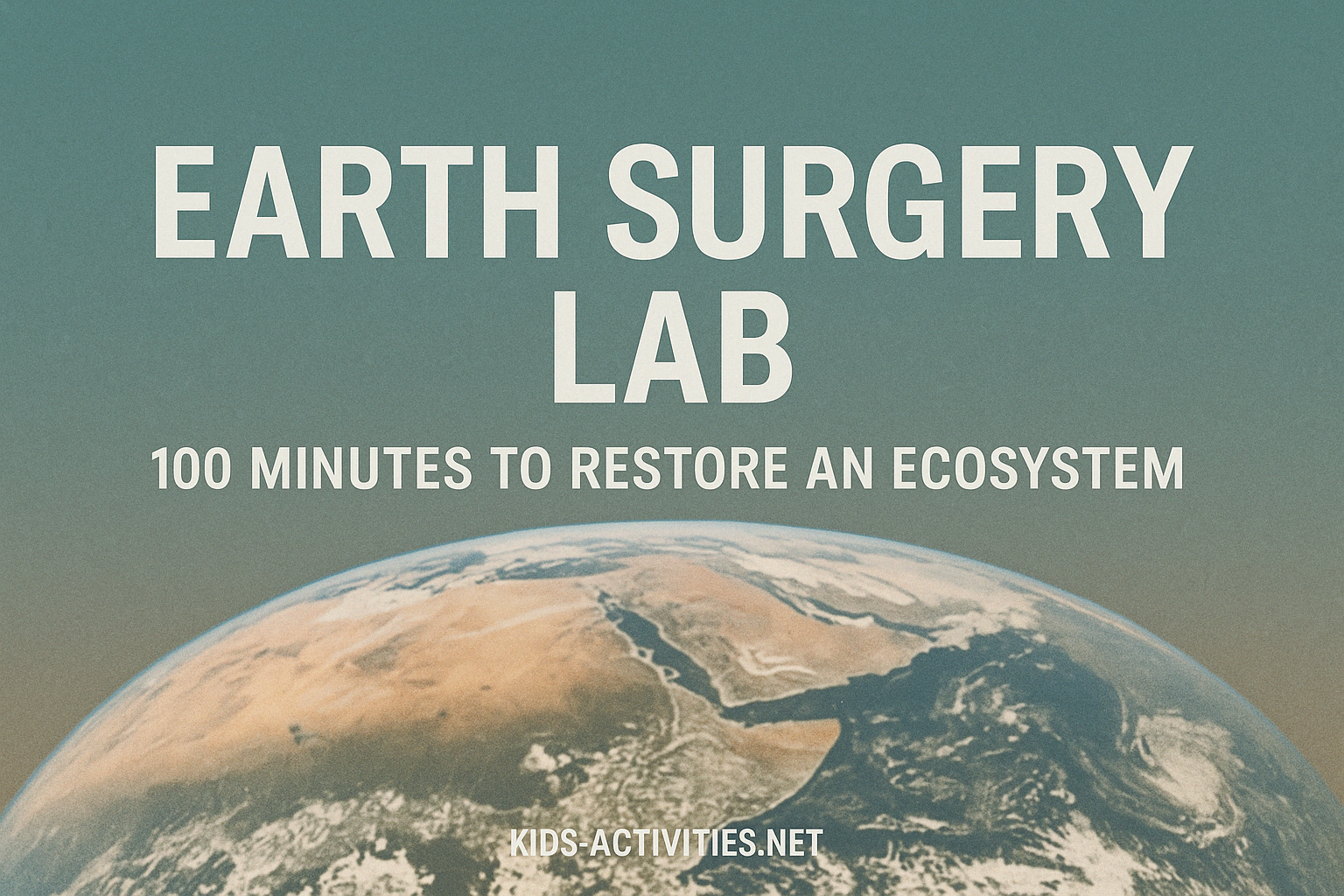
Earth Surgery Lab: Hands-On Eco Activities for Kids (Earth Day Special)
Today, we invite young learners to take on the role of environmental doctors. This hands-on learning lab focuses on repairing our planet’s wounds through science, creativity, and play. In just 100 minutes, children will simulate oil spill clean-ups, craft coral reefs from biodegradable materials, and learn about our fragile ecosystems — not through passive lectures, but by becoming active eco-heroes.
Building Eco-Empathy Through Play
Children hear about climate change, plastic pollution, and endangered animals — but these topics often feel too large, distant, or sad. This can lead to “eco-anxiety,” where children feel powerless or overwhelmed.
The Earth Surgery Lab reframes the narrative.
“If Earth were a patient, what could we do to help her heal?”
By empowering kids to take action, even through pretend play, we plant seeds of confidence, empathy, and scientific understanding. They realise they are not too young to help — and that even small changes can create big ripples.
Environmental Literacy + STEM + Hands-on Healing
The Earth Surgery Lab combines multiple learning streams:
- Scientific Method: Hypothesis, test, observe, improve
- STEM Engineering: Problem-solving with eco-materials
- Sensory Learning: Tactile engagement with natural materials
- Environmental Education: Teaching biodiversity, ecosystems, and interdependence
- Social Collaboration: Kids working in clean-up teams, mimicking real disaster response
Each station of this lab is designed to simulate a real-world environmental crisis and provide an age-appropriate, creative way to repair it.
Station 1: Oil Spill Clean-Up Challenge
Objective
To understand the complexity of oil spills and experiment with clean-up methods, all while building compassion for marine life.
Materials
- 1 clear plastic tray or baking dish
- Feathers (real or synthetic)
- Vegetable oil
- Cotton pads, paper towels, sponge, dishwashing soap, baking soda
- Pipettes or eye droppers
- Timer & observation sheet (printable PDF available)
Steps
- Fill tray with water and add a layer of oil on top.
- Add feathers to represent seabirds caught in the spill.
- Observe what happens.
- Form clean-up teams: each group gets one tool (e.g., sponge, soap, paper towel).
- Start the clean-up timer! (Recommended 10 minutes per team)
- Record results: How clean is the feather now? Did the tool harm it?
- Discuss: What worked best? What would be safest in real life?
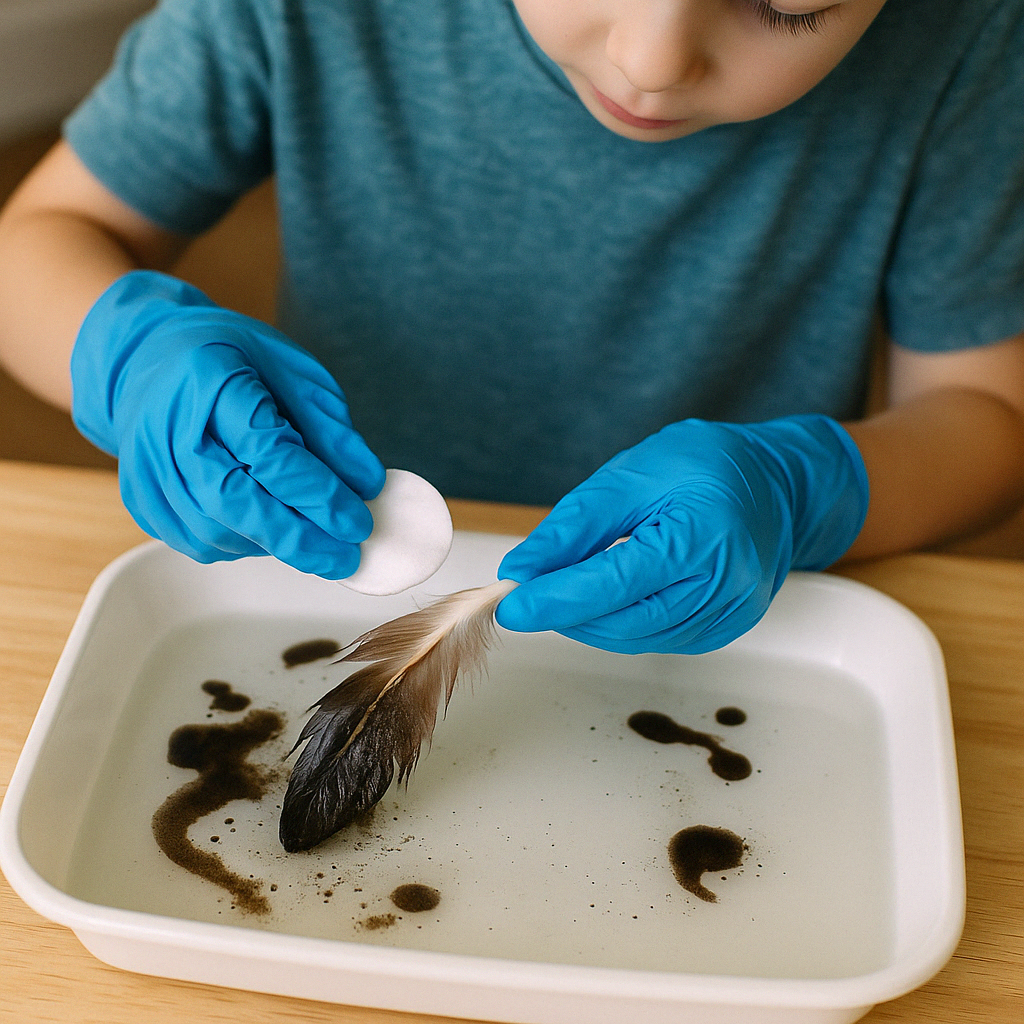
Science Link
Explain how oil molecules repel water, making them hard to clean with water alone. Introduce the idea of surfactants (like in dish soap) that break down oil.
Discussion Questions
- Which methods were most effective?
- Which were most gentle for the animals?
- How does this reflect real environmental efforts like the Exxon Valdez clean-up?
Station 2: 3D Coral Reef Printing with Potato Plastic
Objective
To simulate coral reef restoration using a DIY biodegradable plastic made from household ingredients.
Materials
- Potato starch
- White vinegar
- Glycerin
- Water
- Saucepan + stove or hotplate
- Silicone moulds (reef or sea shapes) or DIY moulds
Steps
- Mix: 1 tbsp starch, 1 tbsp vinegar, 1 tsp glycerin, 4 tbsp water.
- Heat gently while stirring until it becomes a thick gel.
- Pour into moulds and let dry 24 hours.
- Remove and paint with eco-paint.
- Display on a blue cloth to mimic ocean floors.
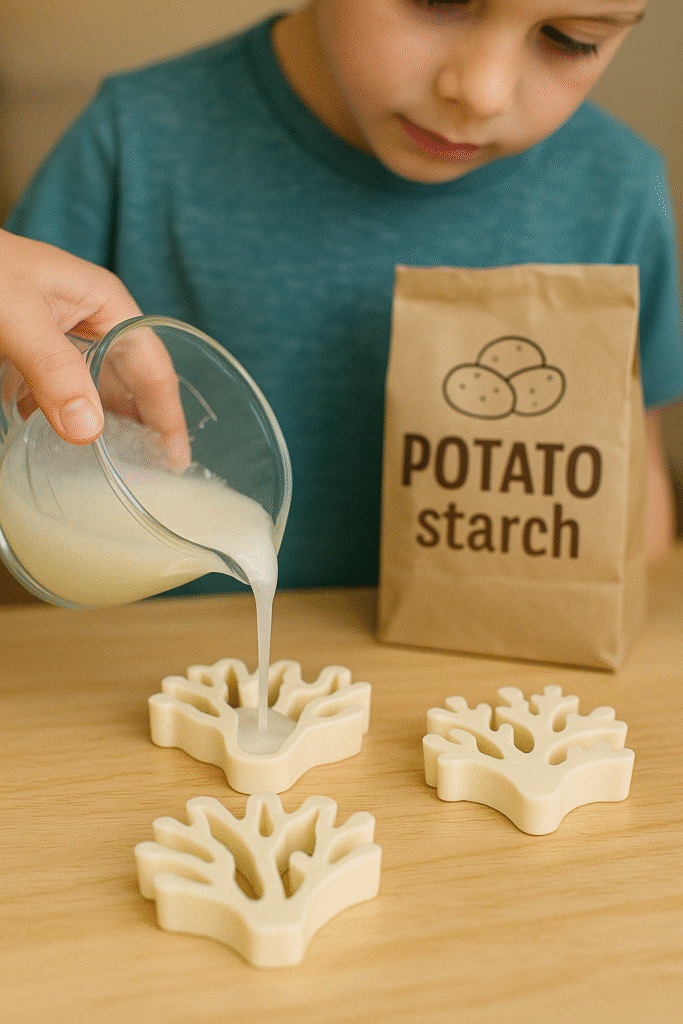
Why It Works
Potato plastic mimics some properties of soft coral materials. The activity introduces the concept of biodegradable alternatives to plastic and how artificial reefs are used in real-world marine science.
Ask & Reflect
- Why are coral reefs important?
- How does pollution or warming hurt them?
- What are some ways science is helping coral grow back?
Fast Track Fixes
For smaller spaces or younger kids:
- Ozone Repair Tag Game: Kids wear blue (ozone) and red (UV rays) scarves. Ozone kids form a shield and block UV kids from tagging others.
- Food Chain Dominoes: Create cards for predator/prey relationships. Remove one card and observe the cascading collapse. Introduces ecosystem fragility.
Free Resources (PDF Downloads)
Download the full Earth Surgery Lab Toolkit which includes:
- Oil Spill Clean-Up Observation Sheet – Track results as kids test various cleaning tools.
- Potato Plastic Coral Mold Recipe – A simple, eco-friendly formula with step-by-step instructions.
- Food Chain Domino Cards – Printable cards to explore predator-prey relationships.
- Doctor of the Planet Badge Template – Colour, cut, and wear with pride!
Perfect for classroom, homeschool, or Earth Day family fun.
PDF Download: Earth Surgery Lab Toolkit
Raising a Generation of Earth Healers
This lab turns passive environmental concern into active engagement. It nurtures:
- Scientific curiosity
- Environmental empathy
- Problem-solving confidence
- Team spirit
Let children take home their coral pieces. Frame their experiment sheets. Wear their “Doctor of Earth” badges with pride.
Because when children are trusted to help — they rise to it.
“Today we cleaned a feather and built a reef. Tomorrow, we change the world.”


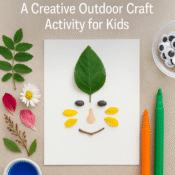
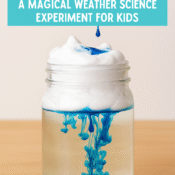

[…] how kids can become eco-guardians in our Earth Day Skills […]
[…] is a measure of how acidic or basic a solution is. It’s a foundational concept in chemistry and environmental science — from testing soil health to understanding how our bodies […]